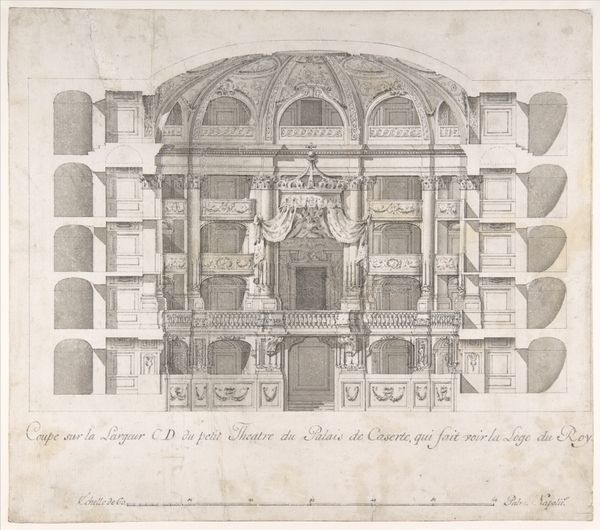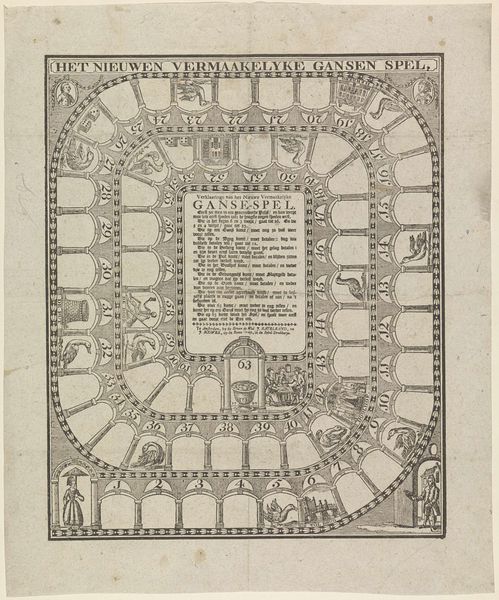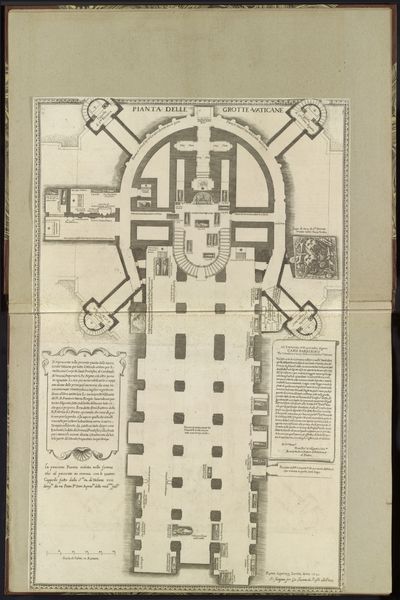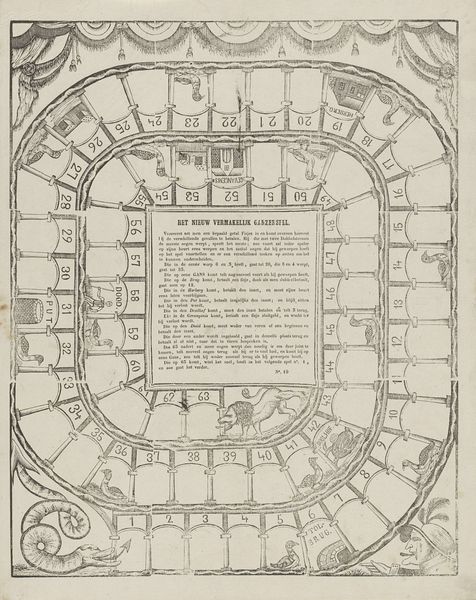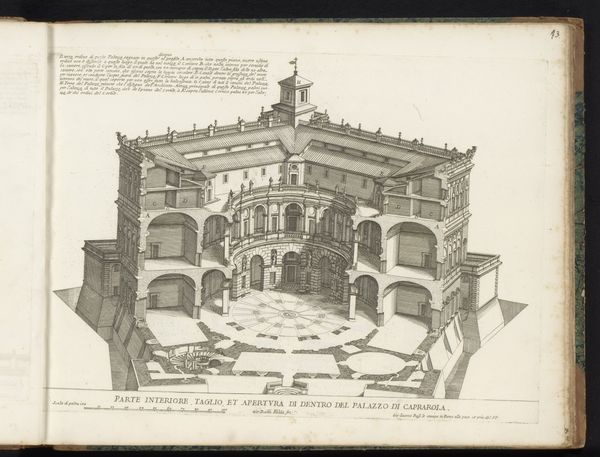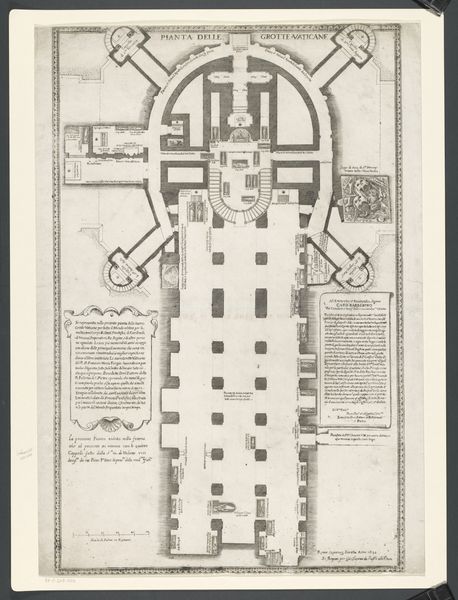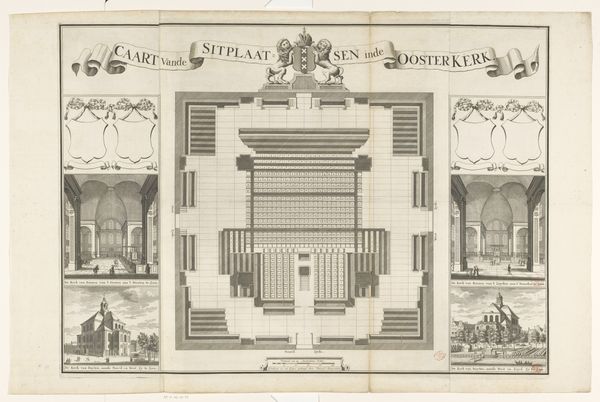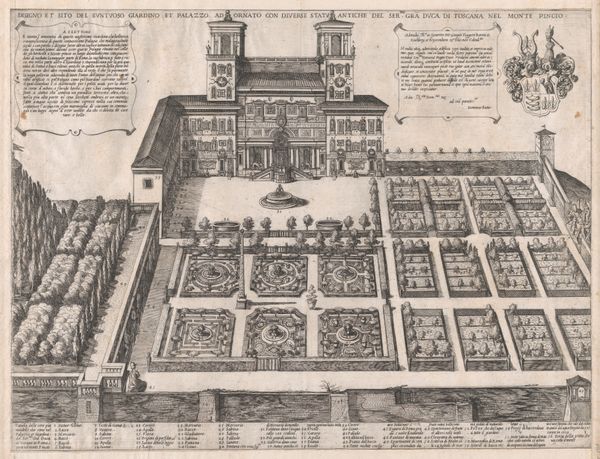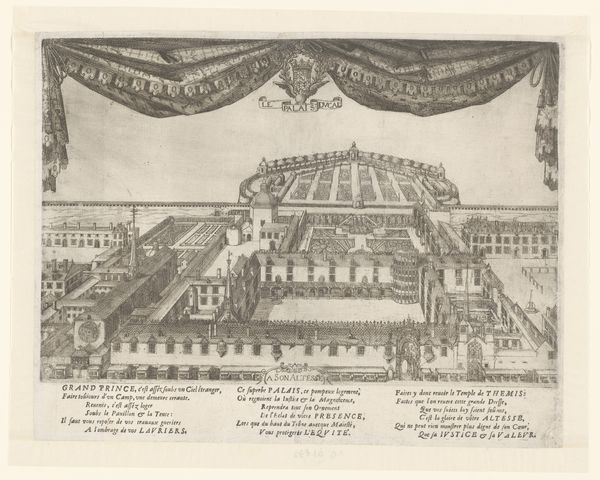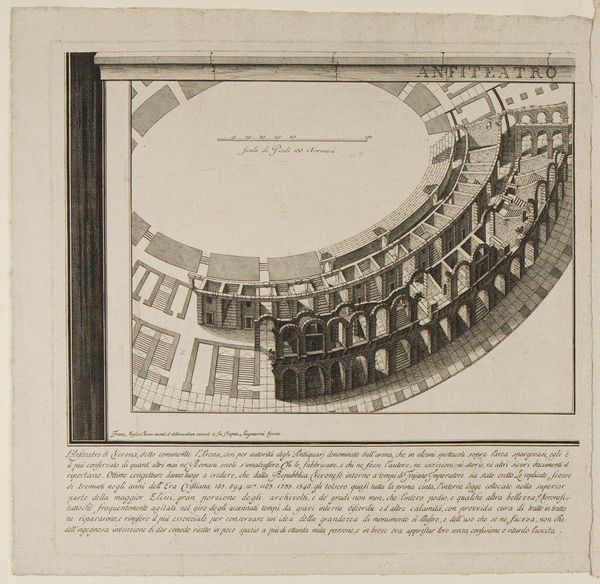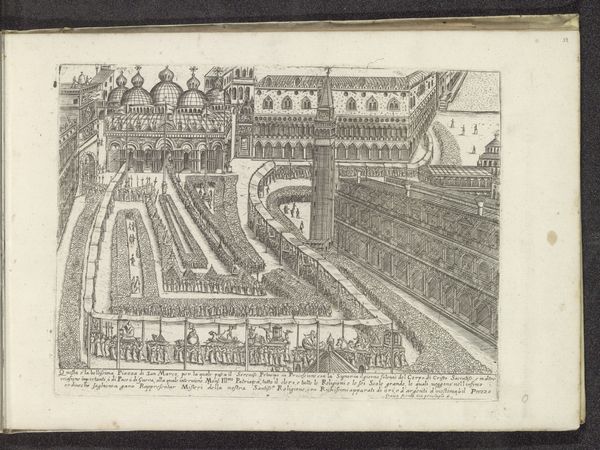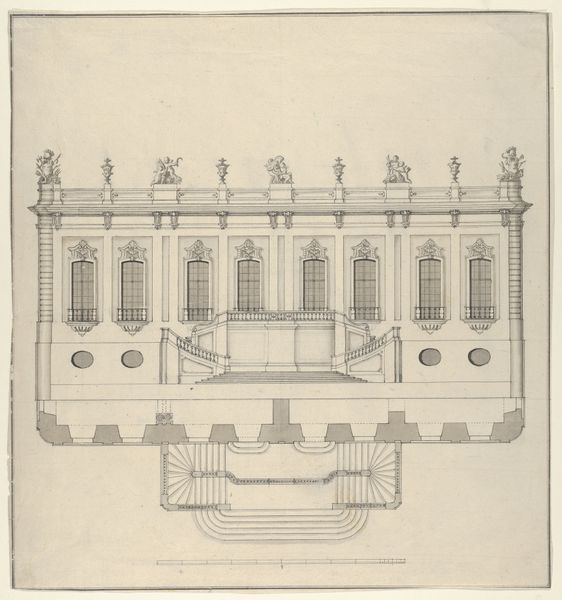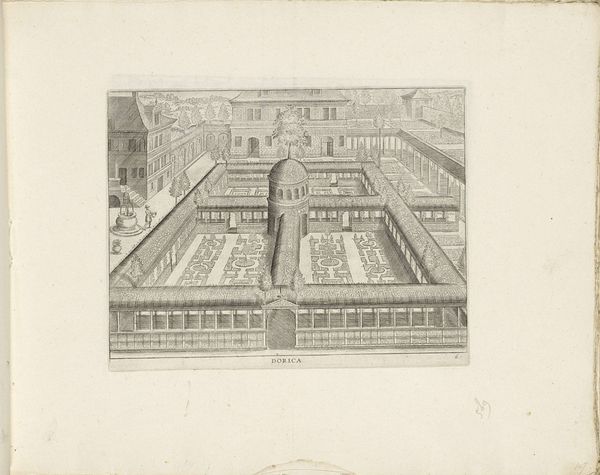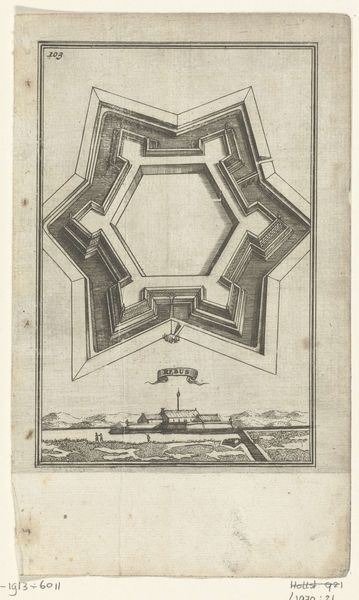
drawing, print, etching, paper, ink, architecture
#
drawing
# print
#
etching
#
landscape
#
etching
#
paper
#
ink
#
ancient-mediterranean
#
architecture
Dimensions: height 389 mm, width 343 mm
Copyright: Rijks Museum: Open Domain
Editor: We’re looking at J. Baugin’s "Het Romeinse theater in Orange, 1639," created between 1637 and 1640. It’s an etching, ink on paper. The stark geometry of the architecture, combined with the chaotic scene in the arena, creates such a strange tension. What do you see in this piece beyond just the historical record? Curator: I see a layering of power dynamics at play. Consider the historical context: this "Roman theater" becomes a site of re-presentation, a 17th-century gaze back at a symbol of Roman authority, now filtered through Baugin’s and, by extension, French, artistic and political sensibilities. How does the choice of etching – a reproducible medium – contribute to the dissemination of this particular perspective on power, culture, and history? Editor: That’s fascinating. So, it's not just a depiction of a ruin, but a commentary? Curator: Exactly! The etching enables a democratized distribution of a specific, and potentially politically charged, understanding of the past. Note also the arena is full of people apparently hunting animals: is that just illustrating everyday use, or something more? Think about who *uses* architecture. What about the contrast between the rigidity of the architectural structure and the violence in the amphitheater below? How do these elements reinforce or challenge existing hierarchies of power? Editor: I didn’t even notice the violence! Now I wonder if the piece is making an argument about spectacle and power. Curator: Precisely! Perhaps suggesting a critical commentary on those systems of power… but also possibly enjoying its exotic spectacle? Editor: Thanks, that completely changed my view of this from a simple architectural study into a real… statement. Curator: And hopefully that view acknowledges all people and perspectives on view, and implicit to its understanding. That tension, I think, is where the real intrigue lies.
Comments
No comments
Be the first to comment and join the conversation on the ultimate creative platform.
